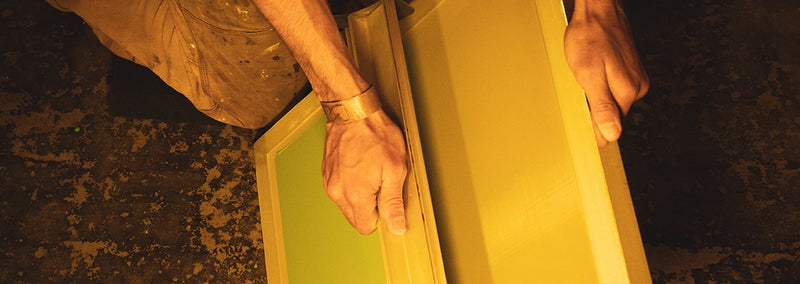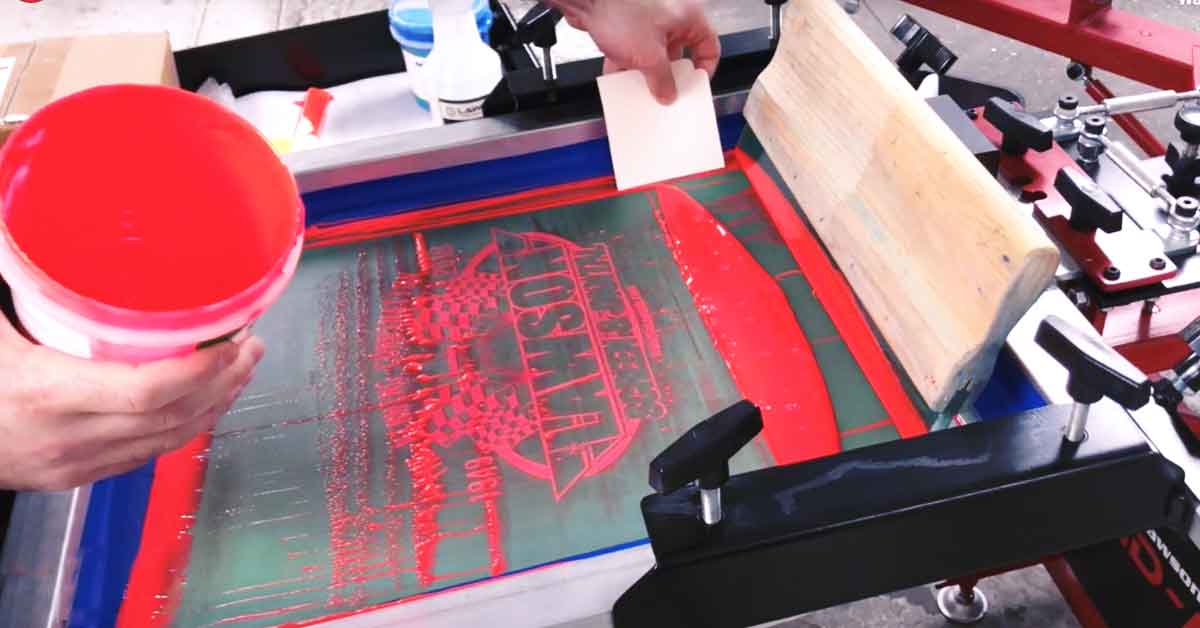Getting The Tx Tees To Work
Getting The Tx Tees To Work
Blog Article
The Main Principles Of Tx Tees
Table of ContentsFacts About Tx Tees UncoveredThe Ultimate Guide To Tx TeesThe Ultimate Guide To Tx TeesThe Best Strategy To Use For Tx TeesThe Single Strategy To Use For Tx TeesThe Best Strategy To Use For Tx TeesThe Only Guide for Tx Tees
Include up other prices, like the number of utilities it takes to run the shop and the price of ink and emulsion per layout. Take the print below.The emulsion must just be a couple of cents since you 'd only need to layer one screen for this task. Just how much should you bill per shirt to make a profit? Normally, printers attempt to make up to 45% earnings on a print work. Right here's a table to aid you identify that: overall expense per product percent of wanted earnings as a decimal (example:.25 or.45) revenue made per item per job Now let's talk regarding the earnings of DTF.

With DTF, you can print a handful of shirts, or simply one. Both screen printing and DTF have their particular niches in the world.
All About Tx Tees
The most effective means to recognize? Ask around and see what printing shop like yours are doing. custom cap printing. Attempt both out and see which you like better
When you're choosing what kind of printing technique to utilize for publishing your art work layouts on your garments, it is essential that you recognize the distinctions between these 2 strategies so you can optimize outcomes while minimizing costs. Screen printing is one of the most commonly used technique for printing layouts on textiles.
DTG printing is likewise referred to as area or straight to garment printing because it prints just what is required rather than making a screen as screen printers do. https://www.intensedebate.com/profiles/russellcostello79602. Display printing works by display filler squeegee screen printing ink display mesh screen, then moving the picture to garment making use of warm and/or stress
The DTG printer uses unique dye-sublimation inks that are used into a pre-designed photo by a digital printing system. The inks come to be part of the textile, permitting lively colors and extraordinary information. It's also referred to as spot or direct to garment printing due to the fact that it prints just what is required instead of making a screen as display printers do.
3 Simple Techniques For Tx Tees
It's much quicker - you can print a fullcolor picture in mins, as opposed to hours for screen printing. Second, there's no established time or expenses entailed - you can publish any type of layout you such as, without needing to develop a display initially. Third, there's no waste - since screen printers display print one design at a time, they have to evaluate each shade independently.
The paper is really pricey and can just be utilized once. Once it's printed on, it has to be discarded. - The first purchase price is lower than the upfront investment of DTG printers- You can publish multi-color styles one display each time rather than having to print each color individually like DTG printing.

9 Easy Facts About Tx Tees Shown
Instead of making use of display mesh as screen printers do, dye sublimation printers use laser innovation to move your photos onto garments or paper. A heat process moves the dye from its solid-state directly into the gas phase which consequently integrates it onto textile substratums when they are rapidly heated to heats under high stress.
Sublimation printing is environment-friendly. It makes use of much less water than screenprinting, and because it doesn't involve the use of harmful solvents, it's safe for all types of clothing. The dye sublimation inks are likewise unsmelling when treated, unlike display printers that make use of harmful chemicals during the display printing process that leave behind an unpleasant odor.
They likewise save cash on expensive tools like direct exposure units because dye sublimation printers don't require a UV direct exposure device or a flash treatment oven that is commonly used in display printing (embroidery shop). What is straight to garment printing (DTG Printing)? DTG printing is an electronic screenprinting procedure that prints directly onto textile using specialized inkjet printers
Tx Tees - An Overview
DTG printing supplies lots of benefits over conventional screenprinting, including the ability to print photographic high quality pictures, greater shade vibrancy, and the capability to print designs on darker textiles. DTG printers work by warming the textile ink till it develops into a gas. The gas then penetrates the material, bonding with the look at this now fibers to create an irreversible print.

Display printers just prepare their screen then start publishing up until they lack item or ink.- There is a wide variety of experienced display printers throughout the globe, which can be helpful for newbies. - It's a slower procedure - display printers usually need to wait on the ink to dry before they can print the following shade- Screen printers require manual labor, so there's a higher knowing curve and it takes longer to generate a premium design- Display printing isn't as exact as DTG printing, so you might get some "bleeding" of shades from one part of the image onto another otherwise done appropriately.
The Of Tx Tees
However, rather than using display mesh as display printers do, color sublimation printers use laser modern technology to transfer your photos onto garments or paper. A heat process moves the dye from its solid-state straight into the gas phase which in turn merges it onto fabric substrates when they are swiftly heated up to high temperature levels under high pressure.
Sublimation printing is environmentally friendly. It makes use of less water than screenprinting, and since it does not include using hazardous solvents, it's risk-free for all kinds of garments. The color sublimation inks are also odor-free when healed, unlike screen printers that utilize hazardous chemicals throughout the display printing process that leave an unpleasant smell.
They also save money on pricey equipment like direct exposure devices since dye sublimation printers don't require a UV direct exposure device or a flash cure oven that is generally made use of in screen printing. What is straight to garment printing (DTG Printing)? DTG printing is an electronic screenprinting process that publishes straight onto textile using specialized inkjet printers.
The 45-Second Trick For Tx Tees
DTG printing offers many benefits over traditional screenprinting, including the capability to publish photo quality pictures, higher color vibrancy, and the capability to publish layouts on darker textiles. DTG printers work by heating the fabric ink up until it turns right into a gas. The gas then penetrates the material, bonding with the fibers to create a permanent print.
Report this page